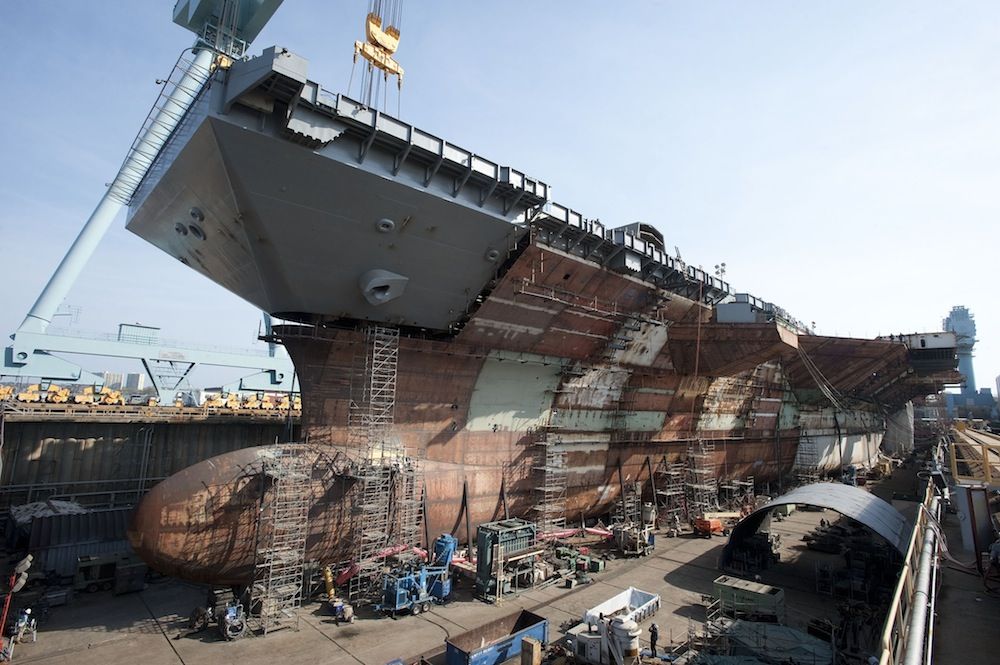US Navy's New Aircraft Carriers Will Be Massive 'Floating Cities'

The U.S. Navy is upgrading its fleet of aircraft carriers with a series of next-generation ships that will be able to accommodate new technologies, including more unmanned, carrier-launched drones.
The new Ford-class aircraft carriers are the first new designs for these types of warships since the USS Nimitz was built in the late 1960s. The sheer size of aircraft carriers, and the number of onboard facilities, earned these ships the nickname of "floating cities."
The first Ford-class ship, the newly complete USS Gerald R. Ford, will enter the water on Nov. 9, as part of a special christening ceremony. The USS Ford is expected to formally enter service in the U.S. Navy in 2016.
The Ford-class carriers feature a suite of upgraded technologies, including the latest radar systems and more efficient nuclear power plants. The ship also has a larger flight deck than previous designs and three aircraft elevators. These advancements will enable the Ford-class carriers to conduct 25 percent more flight missions than their predecessors, the Nimitz-class warships.
When the USS Ford officially enters service, the ship will also be used to launch drones on missions for the military.
"Unmanned aircraft will certainly be part of our portfolio moving forward — they will not replace manned aircraft but will play an important role," Rear Adm. Thomas J. Moore, program executive officer for carriers told Military.com.
The USS Ford weighs nearly 100,000 tons, which is equivalent to about 400 Statues of Liberty, according to Newport News Shipbuilding, which constructed the mammoth warship. Once operational, the "floating city" will be home to more than 4,600 service people and up to 75 aircraft.
Sign up for the Live Science daily newsletter now
Get the world’s most fascinating discoveries delivered straight to your inbox.
The new aircraft carrier is also the most efficient ever designed, and is the first to incorporate more onboard electrical power, replacing older steam-powered systems.
"Ten million feet of electrical cable is installed on [the USS] Ford, enough cable to span the distance from Washington, D.C., to Albuquerque, N.M.," officials at Newport News Shipbuilding said in a statement.
The ships, which represent a new era of American naval power, will be designed to operate for 50 years. The second and third Ford-class aircraft carriers — the USS John F. Kennedy and the USS Enterprise — are expected to enter service in 2025 and 2027, respectively.
Follow Denise Chow on Twitter @denisechow. Follow LiveScience @livescience, Facebook & Google+. Original article on LiveScience.

Denise Chow was the assistant managing editor at Live Science before moving to NBC News as a science reporter, where she focuses on general science and climate change. Before joining the Live Science team in 2013, she spent two years as a staff writer for Space.com, writing about rocket launches and covering NASA's final three space shuttle missions. A Canadian transplant, Denise has a bachelor's degree from the University of Toronto, and a master's degree in journalism from New York University.

'Extremely Large Telescope' being built in Chile could detect signs of alien life in a single night

Ancient Egyptian pyramids, thought to contain only the elite, may also hold low-class laborers

'Potentially hazardous' pyramid-size asteroid will make its closest flyby of Earth for more than 100 years this Wednesday






